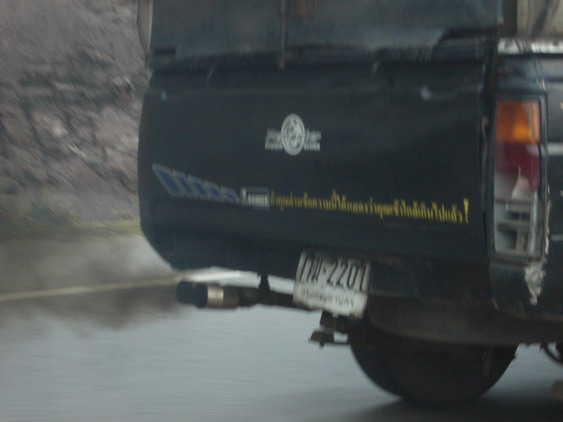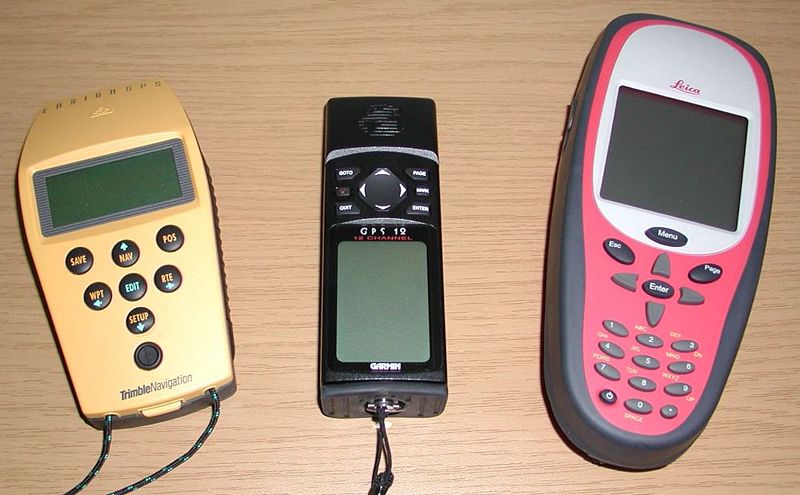Developing Mobile Environmental Monitors
Interview with
Chris Smith - Now Professor Rod Jones who is at Cambridge University, has been working with Cambridge Council to find a way to fill in these gaps and he has been developing cheap mobile environmental monitors to really show how much pollution each person could be exposed to.
Rod Jones - Well the big issue that we are really looking at is that we know that air quality can impact on human health on the one hand and actually on the radiative properties of the atmosphere and the bigger picture still I guess, is that we know that as we look into our future climate, we are likely to see changes in air quality.
 So what we are looking at is trying to understand some of the basic principles associated with what controls air quality and ultimately I guess how we might take steps to try and mitigate changes in the future.
So what we are looking at is trying to understand some of the basic principles associated with what controls air quality and ultimately I guess how we might take steps to try and mitigate changes in the future.
Chris Smith - Air quality can be considered in two ways so there's the air quality on the scale of whole planet and then there's air quality just around town, so are you looking at everything or you're just looking at one small component there?
Rod Jones - Well so our work actually looks at the global issues but this particular project is much more focused on local air quality. So it's the kind of air that we breathe in cities and in urban environments.
Chris Smith - And when a person takes a walk down the road in the average city, what sorts of things they are being exposed to?
Rod Jones - Well a range of gases, things like nitrogen oxides, ozone of course, particulates and the main gases which I think are causing people concern.
Chris Smith - So how are you going to start with them?
Rod Jones - Well of course that probably is being studied at some level but a lot of the equipment that's needed to study, it is big, expensive and complex to run and so you can only locate measurements of that kind in rather sparse network and so what we are trying to do is to look on a much smaller scale, on the meters and more than that we are trying to introduce sensors which we can carry around in our pockets to monitor how air quality is changing and how the air we breathe is changing actually as we walk the streets.
Chris Smith - Because that's going to be a much more realistic measure, isn't it, because if you just sample one area, if the traffic isn't in that area or the wind's blowing the other way you are going to miss a lot of stuff, people don't stay on one place, they move around.
Rod Jones - That's right, and there's a certain amount of evidence that even which side of the street you are on when determining to some extent the exposure to pollutants that you are going to have.
Chris Smith - So what's the strategy? What have you got to do this with?
Rod Jones - Well, nobody has adapted really. Our sensors which are actually used for monitoring of dangerous gases and they are very small sensors in themselves so they are very amenable to being put into very small packages and so we've basically got a handheld device which weighs perhaps 200 gms which actually has on board GPS which we are all used to using in our cars for the location and in fact the guts of a mobile phone which is turned GPRS which allows us to transmit the data from these little boxes to a central computer in real time.
So in fact what we can do is to give people who are involved with the projects, these sensors to carry in their pockets and on to the streets and we can actually map the pollution that they are being exposed to and in fact others around them are being exposed to, in real time.
 Chris Smith - And how do you then put all that data together? How does the system actually work to compile real time data and link it geography?
Chris Smith - And how do you then put all that data together? How does the system actually work to compile real time data and link it geography?
Rod Jones - Well of course the GPS tells you where you are and we can then map the pollutants that we saw the pollutant levels that we see on to even simple things like Google Earth and so that you can see precisely where the high levels or low levels of pollutants are. Of course it's never that simple because as you said a moment ago, standing on one point the pollution varies quite widely but we are able to, at least to some level to pick up that as well.
Chris Smith - How are you actually getting data yet or you're just at the stage where you have got prototypes of the devices now it's ready to go out in teams of people to see what the pollution looks like?
Rod Jones - That stage that we are at is that we actually have a pretty advanced prototype sensors which include, as I said, the GPS, GPRS or the communications on location and we have them in sufficient numbers that we can actually pretty much inundate a city. Where we are not quite there yet is in the sophisticated analysis software that you need both to analyse the data from a scientific perspective and to produce something which somebody can log on to the web and actually see in a web page what the pollution for a particular time of day or what they might be expected to be exposed to if they lived in a particular part of a city, is, and we are working very rapidly on that. So we are hoping to put together the whole package but it's not quite the finished article yet.
Chris Smith - How are you going to use it? Is this going to be giving pedestrian these devices? Is it going to be cars these devices because obviously they are going to see different levels of pollution and what sort of resolution you are able to get because can you literally see someone walking on a pavement versus someone in the car or on the road?
Rod Jones - Some of the sensors are certainly capable of detecting those, that the differences between being in the centre of the road and being on the pavement but I think really what we are aiming for here is to produce a network of sensors which solve, which will be static in fact but any kind of platform, moving platform as well as lamp post, for example, would be used to provide us with a very wide range of data for this very complicated environment and where you can envisage somebody walking down the street with their mobile phone actually using WiFi or the Internet to pick up a map which gives you real time pollution.
Chris Smith - And that was going to be where I was going to go next which is to ask you well how is this going to guide either re-planning of towns and cities and traffic flow or how humans behave?
Rod Jones - Well there are ranges of activities which could be influenced by this. If you have a sophisticated network of air quality measurements then you can actually use that to begin to understand how that links into the detailed traffic flow and ultimately you could think about controlling traffic flow to minimize the hotspots, the pollution hotspots.
On another level you could actually use it to begin to map out if you like the lowest pollution path between your place of work and your house and so somebody in the morning can get up and look at the web and decide which is the preferred cycling route which is going to give them the least level of exposure to pollution, that's a dream for the future but it's not that far in the future.
Chris Smith - And do you think you'll see yourself one day in the position where you will be able to go up to the developer who is about to put in a new housing state and you would say 'Don't build your roads like that because we know that will create a greater pollution problem than if you plan like this'?
Rod Jones - Well I think we, in a sense, have a responsibility to try and answer those kinds of questions, how clear cut an answer you can get for some of the questions that you have just asked, I am not really sure yet but we are to be able to derive a general picture of how to, for example, build a housing estate in a green fashion.
Chris Smith - Indeed, and also get to work with the least inhaled aerosol pollutants, it sounds good news to me. That was professor Rod Jones, he is at Cambridge University's Chemistry Department who was explaining to me there how his handheld devices could make sure that new developments are brought in locations that would do the least environmental damage and also let people plan their healthiest commutes or even the cleanest walk to the shops.
- Previous Checking City Air
- Next On the Road with Mobile Sensors









Comments
Add a comment